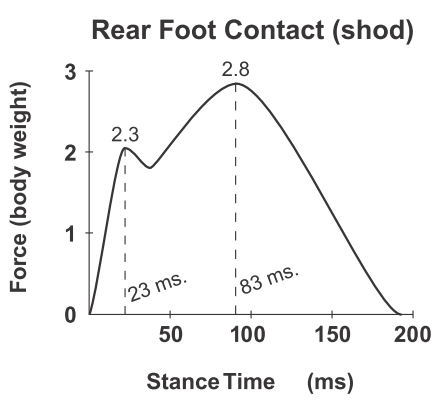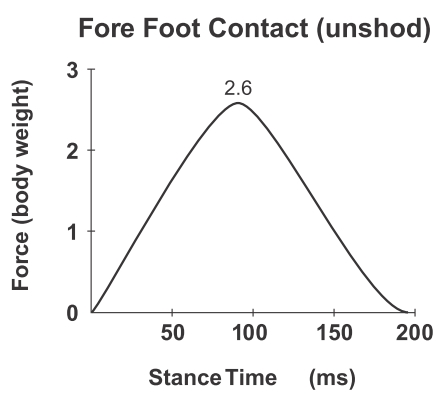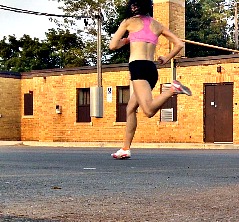All styles of running produces a ground reaction force, however some running styles, such as heel strike running, increases the magnitude of the ground reaction force compared with forefoot running.
One reason that heel strike running produces a greater ground reaction force is the presence of 2 impact peaks which are not produced in a forefoot strike.

Heel Strike Running Produces 2 Harmful Impact Peaks, Forefoot Running Does Not
The first impact peak, known as the impact transient, occurs after the initial contact of the heel with the ground and is in response to loading via deceleration.
The second peak, known as the thrust peak, occurs during mid-stance where the weight of the body transfers over the arch onto the forefoot.
In contrast, Lieberman et al., (2010) found that forefoot running did not generate the double impact peaks associated with heel strike running.

What does this mean in terms of injury?
By definition, impact force is defined as a shock that occurs when two bodies abruptly collided into each other.
Generally speaking, a collision involves braking or deceleration which cannot be good if braking occurs during running when the body is trying to move forward, right?
Why would the human body evolve a running technique that favors braking during running?
If this is the case, than natural selection has played a cruel trick on humans because the shock produced by the heel strike induced-collision is one of the primary etiological agents in degenerative joint disease and most injuries of the musculoskeletal system.
In addition, the impact peaks of heel strike running are directly related to tibial stress fracture and plantar fasciitis.
Why Forefoot Running is Better
Forefoot running generates a very low collision force, even on very hard surfaces such as pavement, because the ball- to-heel movement pattern of the foot allows for a flatter and fluid interaction with the ground.
Plus, maintaining a more forward position of the center of mass coupled with lifting the foot off the ground to create a fall are pivotal for reducing braking.
The mechanical parameters of forefoot running complement forward momentum rather than oppose it as in heel strike running.
The Take Home Message
The double impact peaks in heel strike running are indicative of opposing forward momentum, making heel striking utterly counterproductive. Essentially, heel strike running seems to be the knot of problems related to injury.
The more we learn about the double impact peaks of heel strike running, the better able we can clarify why heel strike is what characterizes running as the most injurious activity. This is not the case when the forefoot makes initial contact with the ground!
More On Forefoot vs Heel Strike Running:
- How Heel Strikers Get Shin Fractures
- How Heel Striking & Forefoot Striking Differ
- What is Forefoot Running?
- Motion Control Shoes No Good for Heel Strikers
References:
Gill, HS and O’Connor, JJ. Heel strike and the pathomechanics of osteoarthritis: A simulation study. J Biomech, 2003, 36, 1617–1624
Lieberman et al. Foot strike patterns and collision force in habitual versus shod runners. Nature, 2010; 463 (7280), 531–535.
Lohman et al. A comparison of the spatiotemporal parameters, kinematics, and biomechanics between shod, unshod, and minimally supported running as compared to walking. Phys Ther Sport, 2011; 12: 151–163
Bretta Riches
BSc Neurobiology; MSc Biomechanics candidate, ultra minimalist runner & founder of RunForefoot. I was a heel striker, always injured. I was inspired by the great Tirunesh Dibaba to try forefoot running. Now, I'm injury free. This is why I launched Run Forefoot, to advocate the health & performance benefits of forefoot running and to raise awareness on the dangers of heel striking, because the world needs to know.
Latest posts by Bretta Riches (see all)
- Cushioned Running Shoes Found to Be Bad for Ankles - 23/04/2024
- Forefoot Running and Achilles Pain - 19/04/2024
- Does Foot Strike Really Matter in Running? YES! - 17/04/2024



Leave a Reply